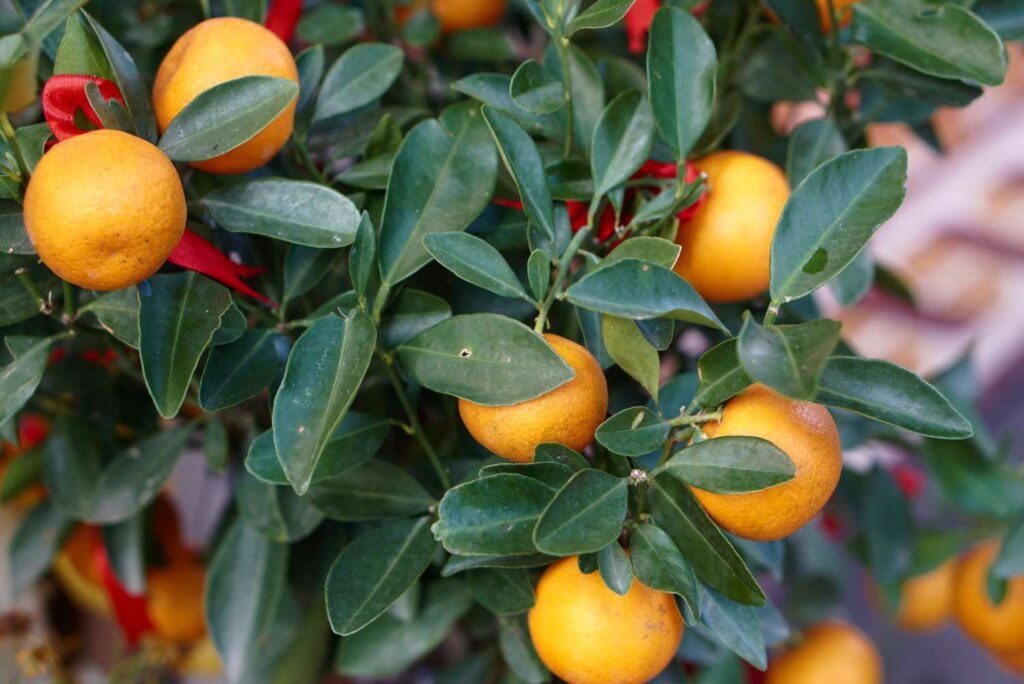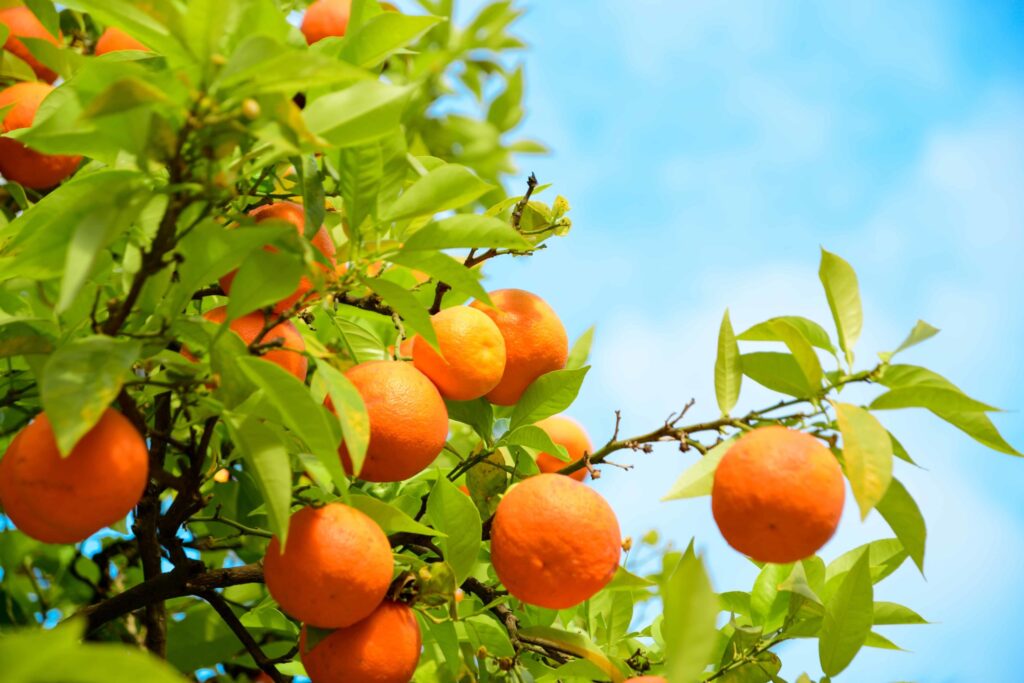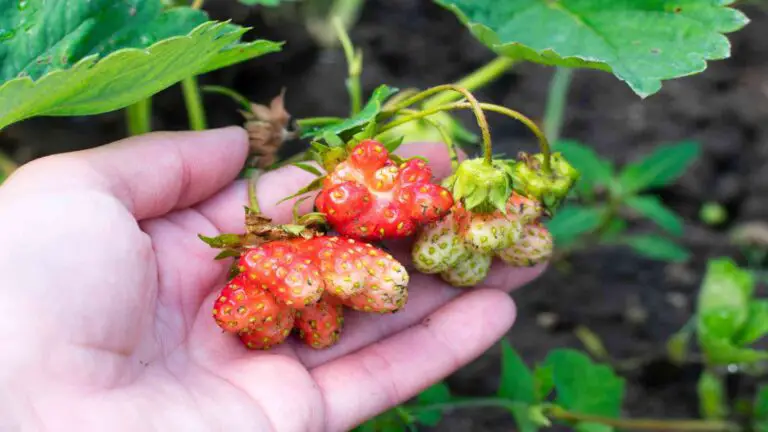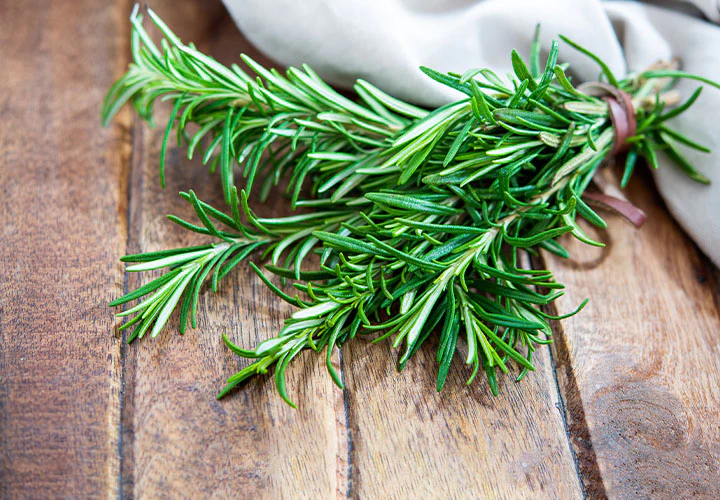Navel Orange Tree Care: How to Grow and Harvest These Super Sweet Fruits
Table of Contents: Navel Orange Tree Care
Understanding Navel Orange Tree Care: A Comprehensive Guide

The Navel Orange Tree Care: scientifically known as Citrus sinensis, is a popular and versatile fruit tree that is cherished by gardeners and citrus enthusiasts around the world. Believed to have originated in Brazil, this evergreen tree is renowned for its deliciously sweet and seedless fruit, making it a favorite for fresh consumption, juicing, and baking.
One of the distinctive features of the Navel Orange tree is the presence of a small, undeveloped secondary fruit at the blossom end of the main fruit, which resembles a human navel – hence the name “Navel Orange.” This unique characteristic not only adds to the tree’s aesthetic appeal but also provides an easy way to identify and differentiate it from other citrus varieties.
In addition to its flavor and appearance, the Navel Orange tree is highly valued for its adaptability to different climates and growing conditions. With proper care and attention, it can thrive in both tropical and subtropical regions, making it a popular choice for home gardeners and commercial growers alike. Whether you’re a seasoned horticulturist or a beginner looking to embark on your citrus-growing journey, understanding the Navel Orange tree is essential to ensure its successful growth and bountiful harvests. From selecting the ideal location to protecting the tree from pests and diseases, this comprehensive guide will equip you with the knowledge and techniques needed to cultivate healthy and productive Navel Orange trees.
Selecting the Ideal Location for Your Navel Orange Tree Care:
Selecting the ideal location for your navel orange tree is crucial to its long-term health and productivity. Navel orange trees require a location that receives abundant sunlight for at least six to eight hours per day. Without sufficient sunlight, the tree may not produce high-quality fruits or even fail to bear any fruits at all.
In addition to sunlight, it is important to consider the climatic conditions of your region. Navel orange trees thrive in mild to warm climates with average temperatures between 55°F and 80°F (13°C and 27°C). Frost can be detrimental to the tree, so avoid planting it in areas prone to late frosts or cold winds. Moreover, strong winds can damage the delicate branches and blossoms of the tree, so it is advisable to choose a sheltered location or create windbreaks to protect it.
Furthermore, the soil quality plays a vital role in the success of your navel orange tree. The ideal soil for navel orange trees is well-draining and loamy, with a pH level between 6.0 and 7.5. Conduct a soil test to determine the pH level and nutrient content of the soil before planting. If the soil is too acidic or alkaline, you can amend it with organic matter or specific additives to optimize the pH level. Additionally, ensure that the chosen location has adequate space for the tree to spread its roots and access sufficient water and nutrients.
By considering these factors and selecting a suitable location for your navel orange tree, you are setting a solid foundation for its growth and productivity in the years to come.
Preparing the Soil for Successful Navel Orange Tree Care Growth
The success of your navel orange tree begins with the preparation of the soil. Before planting, it is crucial to ensure that the soil conditions are optimal for the growth and development of your tree. Navel oranges thrive in well-draining soil with a pH level between 6 and 7.5.
To create the ideal soil environment, start by testing the pH level of your soil using a soil testing kit or by sending a sample to a local agricultural extension office. If the pH level is outside the recommended range, you can adjust it by adding amendments such as dolomite lime to increase acidity or sulfur to decrease acidity.
In addition to pH adjustment, it is important to improve the soil’s drainage capabilities. Poorly drained soil can lead to root rot and other diseases, which can significantly impact the health of your navel orange tree. To enhance drainage, consider adding organic matter such as compost or well-rotted manure to the soil. This will help loosen compacted soil and improve its ability to retain moisture without becoming waterlogged.
Remember to thoroughly mix the amendments into the topsoil before planting your navel orange tree. By taking the time to prepare the soil properly, you are providing a solid foundation for the successful growth and future productivity of your navel orange tree.
Choosing the Right Navel Orange Tree Care Variety for Your Climate

When choosing the right navel orange tree variety for your climate, it’s crucial to consider the specific environmental conditions that your tree will be exposed to. Navel orange trees thrive in subtropical and Mediterranean climates, where they can enjoy a balance of warm temperatures, moderate rainfall, and plenty of sunshine.
If you live in a region with cold winters, it’s important to select a navel orange tree variety that is cold hardy. Some cold-hardy navel orange tree varieties that you can consider include the ‘Cara Cara’ and ‘Washington’ varieties. These varieties can tolerate temperatures as low as 25°F (-4°C) without suffering significant damage.
On the other hand, if you reside in an area with hot and dry summers, you should opt for heat and drought-tolerant navel orange tree varieties. The ‘Valencia’ variety, for example, is known for its ability to withstand high temperatures and thrive in arid conditions. It is a late-season variety that produces juicy and flavorful oranges.
Ultimately, choosing the right navel orange tree variety for your climate is key to ensure successful growth and a bountiful harvest. By considering factors such as temperature extremes, rainfall patterns, and overall climate conditions, you can select a variety that will adapt well to your specific region and provide you with delicious navel oranges for years to come.
Planting Your Navel Orange Tree Care: Step-by-Step Instructions
Planting a navel orange tree can be a rewarding experience, but it requires careful attention to detail to ensure successful growth. Before you begin, it’s essential to select a suitable location that meets the tree’s sunlight and soil requirements. Ideally, choose a spot with full sun exposure, as navel orange trees thrive in bright and direct sunlight. Additionally, ensure that the soil is well-draining and has a pH level between 6.0 and 7.5 for optimal growth.
Once you have chosen the location, it’s time to prepare the soil. Start by removing any weeds or grass from the planting area. Dig a hole that is slightly wider and deeper than the tree’s root ball, ensuring there is enough space for the roots to spread out. Loosen the soil at the bottom of the hole to promote root growth and absorption of nutrients. Now, gently remove the navel orange tree from its container and place it in the hole, making sure the top of the root ball is level with or slightly above the soil surface. Backfill the hole with soil, firmly pressing down to eliminate air pockets. Finally, create a raised basin around the tree, allowing water to gather and soak into the soil efficiently.
Watering and Irrigation Techniques for Navel Orange Tree Care:
Proper watering and irrigation techniques are crucial for the healthy growth and development of navel orange trees. Consistent and adequate moisture is essential to ensure optimal fruit production and overall tree vitality. Here, we will explore some valuable tips and guidelines to help you effectively water and irrigate your navel orange trees.
First and foremost, it is important to establish a regular watering schedule for your navel orange trees. In general, mature trees require deep and infrequent watering, while younger trees need more frequent irrigation. When determining the watering frequency, consider factors such as the tree’s age, soil type, weather conditions, and overall moisture requirements. To ensure thorough watering, it is advisable to use a drip irrigation system or soaker hoses, which deliver water directly to the tree’s root zone. This helps to minimize water wastage and encourages deep root penetration, promoting a stronger and more resilient tree.
Fertilizing Your Navel Orange Tree Care: Dos and Don’ts
When it comes to fertilizing your navel orange tree, there are a few dos and don’ts to keep in mind. First and foremost, do make sure to fertilize your tree regularly to provide it with the nutrients it needs for healthy growth and abundant fruit production. Navel orange trees have a high demand for nitrogen, phosphorus, and potassium, so choose a balanced fertilizer specifically formulated for citrus trees.
Dos:
– Follow the recommended fertilizer application rates based on the age and size of your tree. Younger trees may require smaller amounts, while mature trees may need more.
– Apply the fertilizer evenly around the drip line of the tree, avoiding direct contact with the trunk. This allows for better absorption by the roots.
– Water the tree thoroughly after fertilizing to help distribute the nutrients throughout the root zone.
On the other hand, there are a few don’ts to consider when it comes to fertilizing your navel orange tree. First and foremost, don’t over-fertilize your tree. Excessive amounts of fertilizers can lead to nutrient imbalances and can even damage the tree. It’s important to follow the recommended application rates and not exceed them. Remember, less is often more when it comes to fertilizer.
Don’ts:
– Avoid fertilizing your navel orange tree during periods of drought or when the soil is dry. This can lead to fertilizer burn and damage the tree’s roots.
– Don’t apply fertilizer to the foliage of the tree. Fertilizers should always be applied to the soil to prevent leaf burn and ensure proper nutrient uptake.
– Refrain from using high-nitrogen fertilizers in excess as it can promote excessive vegetative growth at the expense of fruit production.
By following these dos and don’ts, you can ensure that your navel orange tree receives the right amount of nutrients to thrive and bear delicious fruits.
Pruning and Training Your Navel Orange Tree Care for Optimal Growth

Pruning and training are essential practices for optimal growth and fruit production in navel orange trees. By carefully shaping and directing the growth of your tree, you can encourage stronger branches, improve air circulation, and promote the development of a sturdy framework.
To begin, it is important to prune your navel orange tree during its dormant period, typically in late winter or early spring. Start by removing any dead, damaged, or diseased branches, cutting them back to healthy tissue. Additionally, you should thin out any crossing or overcrowded branches to allow for better light penetration and air movement within the canopy. Remember to always use sharp, clean pruning tools to make clean cuts that heal more quickly.
Once you have removed unwanted branches, it’s time to focus on training your navel orange tree. Most experts recommend using a modified central leader system, where a single central leader is maintained and lateral branches are allowed to develop at regular intervals. This helps create a well-balanced and open structure, providing ample sunlight and space for fruiting. As your tree grows, consider using stakes or ties to support any heavy branches and prevent them from breaking under the weight of the fruit. With proper pruning and training, you can ensure your navel orange tree reaches its full potential, producing bountiful harvests for years to come.
Protecting Your Navel Orange Tree Care from Pests and Diseases
Pests and diseases can pose a significant threat to the health and productivity of your navel orange tree. It is important to take proactive measures to protect your tree and ensure its long-term success. One of the key steps in safeguarding your tree is regular inspection. By closely monitoring your tree for any signs of pests or diseases, you can detect issues early on and take appropriate action. Look out for symptoms such as leaf discoloration, wilting, distorted growth, or the presence of pests like aphids, mites, or citrus psyllids.
When it comes to pest control, there are several effective options available. Natural predators such as ladybugs and lacewings can help keep pest populations in check. Additionally, introducing beneficial nematodes or using insecticidal soaps and oils can provide effective control without harming beneficial organisms. In the case of diseases, prevention is crucial. Proper sanitation practices, such as cleaning pruning tools between uses, can help reduce the spread of pathogens. Applying fungicides or bactericides, if necessary, can further protect your tree from diseases like citrus canker or root rot. By implementing a comprehensive pest and disease management strategy, you can ensure the health and vitality of your navel orange tree.
Recognizing Common Navel Orange Tree Care Problems and Solutions
Navel orange trees, like any other crop, are susceptible to a variety of problems that can affect their health and productivity. Recognizing these problems early on is crucial in order to implement appropriate solutions and safeguard your orange tree’s well-being. One common issue faced by navel orange trees is nutrient deficiencies. Inadequate levels of essential nutrients can result in stunted growth, yellowing leaves, and reduced fruit production. To identify nutrient deficiencies, observe the appearance of your tree’s foliage and compare it to nutrient deficiency charts available from reputable agricultural extension services or horticultural organizations. Once you have determined the lacking nutrient, you can rectify the situation through soil amendments or foliar sprays to provide your navel orange tree with the necessary nutrients for optimal growth.
Another common problem faced by navel orange trees is pest infestation. Pests such as aphids, mites, and scale insects can wreak havoc on the tree’s health and fruit quality. Regularly inspect your tree for signs of pest activity, such as distorted leaves, honeydew secretion, or visible insects. If pests are detected, there are several integrated pest management techniques you can employ to control their population. These methods include introducing natural predators, using organic insecticides or horticultural oils, and practicing good sanitation in the orchard. Remember to always follow safe and environmentally friendly practices when dealing with pests to protect the overall ecosystem of your garden.
By being vigilant and proactive in recognizing common problems that can affect navel orange trees and implementing suitable solutions, you can ensure the longevity and productivity of your tree. Taking the time to regularly inspect your tree, monitor its nutrient status, and address any issues promptly will contribute to the overall success of your navel orange cultivation endeavors.
Monitoring and Managing Navel Orange Tree Care Nutrient Deficiencies
Navel orange trees, like all plants, require certain nutrients to grow and thrive. Nutrient deficiencies can occur when these essential elements are lacking in the soil or not properly absorbed by the tree. Monitoring and managing nutrient deficiencies in navel orange trees is crucial for maintaining their health and productivity.
One common nutrient deficiency in navel orange trees is nitrogen. Nitrogen is essential for the development of healthy foliage and supports overall growth. Symptoms of nitrogen deficiency may include pale yellow leaves, stunted growth, and reduced fruit production. To address this deficiency, a nitrogen-rich fertilizer can be applied to the soil. It is important to follow the recommended dosage, as excessive nitrogen can lead to imbalanced growth and increased susceptibility to diseases.
Another nutrient deficiency that navel orange trees may experience is potassium. Potassium plays a vital role in fruit development and the overall vigor of the tree. Signs of potassium deficiency may include yellowing or browning leaf margins, weak branches, and decreased fruit quality. To remedy this deficiency, potassium-rich fertilizers or organic amendments can be added to the soil. Regular soil testing is recommended to determine the specific nutrient deficiencies and guide appropriate fertilization practices for optimal navel orange tree health.
Harvesting Navel Orange Tree Care: When and How to Pick the Ripe Fruits
Harvesting navel oranges at the right time is crucial to ensure optimal flavor and juiciness. Navel oranges are typically ready for harvest in late fall to early winter, depending on the specific variety and growing conditions. The key indicator of ripeness is the color of the fruit – when the oranges have turned a bright, vibrant orange, they are likely ready to be picked.
To harvest navel oranges, gently grasp the fruit and twist it upwards, giving it a slight tug. If the orange detaches easily from the tree, it is ripe and ready to be enjoyed. Avoid pulling or yanking the fruit, as this can damage the tree and affect future harvests. It’s important to note that navel oranges do not continue to ripen off the tree, so it’s best to wait until they are fully ripe before picking.
When harvesting navel oranges, it’s always a good idea to wear gloves and use a pair of sharp pruning shears or scissors to cut the fruit from the tree. This helps minimize damage to both the fruit and the tree. Make sure to sanitize your tools between cuts to prevent the spread of diseases. Once harvested, navel oranges can be stored for several weeks at room temperature or refrigerated for even longer freshness. The flavor of freshly picked navel oranges is truly unmatched, making it worth the effort and patience to harvest them at the peak of ripeness.
• Navel oranges are typically ready for harvest in late fall to early winter.
• The key indicator of ripeness is the bright, vibrant orange color of the fruit.
• To harvest navel oranges, gently twist the fruit upwards and give it a slight tug.
• Avoid pulling or yanking the fruit to prevent damage to the tree and future harvests.
• Navel oranges do not continue to ripen off the tree, so wait until they are fully ripe before picking.
• Wear gloves and use sharp pruning shears or scissors when harvesting navel oranges to minimize damage.
• Sanitize your tools between cuts to prevent disease spread.
• Once harvested, navel oranges can be stored at room temperature or refrigerated for extended freshness.
Storing and Preserving Navel Orange Tree Care for Longevity and Freshness

To ensure the longevity and freshness of your navel oranges, proper storing and preserving methods are crucial. Here are some essential tips to help you maintain the quality of your harvest:
1. Temperature and Humidity Control: Navel oranges should be stored in a cool, dry place to maintain their freshness. Ideally, the storage temperature should range between 38-48°F (3-9°C), with a humidity level of around 85-90%. Avoid storing navel oranges near heat sources or in areas with high humidity, as this can accelerate spoilage.
2. Ventilation and Air Circulation: Adequate air circulation is essential to prevent the buildup of moisture and extend the shelf life of your navel oranges. You can store them in mesh bags or open crates that allow for good airflow. Avoid overcrowding the fruit, as it can lead to increased perspiration and mold development.
By following these simple guidelines, you can maximize the longevity and quality of your navel oranges, ensuring that they remain fresh and delicious for an extended period. Proper storage and preservation techniques play a vital role in maintaining the flavor, juiciness, and nutritional value of your harvest.
Here’s a simple table providing information on Navel Orange tree care, including how to grow and harvest these sweet fruits:
| AspectNavel Orange Tree Care | |
|---|---|
| Sunlight | Full sunlight is essential for optimal growth and fruiting. |
| Soil | Well-draining soil with a slightly acidic to neutral pH (6.0-7.5). |
| Watering | Regular watering, especially during dry spells. Allow soil to dry between watering. |
| Fertilization | Feed with a balanced fertilizer in spring and late summer. |
| Pruning | Prune to shape the tree and remove dead or crowded branches. |
| Mulching | Apply a layer of organic mulch to conserve moisture and suppress weeds. |
| Pest Control | Monitor for pests like aphids and scale insects; use insecticidal soap if needed. |
| Disease Prevention | Apply fungicides as needed to prevent diseases like citrus canker. |
| Harvesting Time | Navel oranges are typically ready for harvest in late fall to early spring. |
| Harvesting Technique | Gently twist or cut the fruit from the tree to avoid damage. |
| Storage | Store harvested oranges in a cool, dry place for short-term use. For longer storage, refrigerate. |
| Common Issues | Watch for signs of nutrient deficiencies, pests, and diseases; address promptly. |
| Additional Tips | Protect young trees from frost; provide support for heavy fruit loads. |
Remember that specific care instructions may vary based on your location and local climate conditions. Adjustments may be necessary depending on factors like temperature, humidity, and soil quality in your region.
Troubleshooting Tips for Successful Navel Orange Tree Care
When it comes to caring for your navel orange tree, it’s important to be prepared for any potential issues that may arise. Troubleshooting and addressing problems promptly can help ensure the overall health and productivity of your tree. Here are some handy tips to help you navigate through common issues that you may encounter in navel orange tree care.
One common problem that navel orange trees can face is nutrient deficiencies. These deficiencies can result in stunted growth, yellowing leaves, and poor fruit production. To tackle this issue, it’s crucial to monitor the nutrient levels in the soil and provide the necessary supplements accordingly. Conducting regular soil tests and adjusting the fertilizer application can help maintain the right balance of essential nutrients for optimal tree health. Additionally, be sure to use a fertilizer specifically formulated for citrus trees, as they have unique nutritional requirements.
Another challenge that navel orange trees may face is the threat of pests and diseases. Insects like aphids, scales, and mites can damage the leaves and fruit, while diseases like citrus canker and citrus greening can pose severe threats to the overall health of the tree. Implementing integrated pest management strategies, such as regular monitoring, timely treatment, and maintaining good hygiene practices, can aid in preventing and managing these issues effectively. In some cases, biological controls and organic pest management solutions can also be valuable tools in protecting your navel orange tree from harmful pests and diseases.
How do I know if my Navel Orange Tree Care is getting enough sunlight?
You can tell if your navel orange tree is getting enough sunlight by observing its growth and fruit production. If the tree is healthy, producing vibrant leaves, and yielding a good amount of fruits, it is likely receiving adequate sunlight. Additionally, navel orange trees prefer full sun exposure for at least 6 to 8 hours a day.
Can I plant a Navel Orange Tree Care in a container or pot?
Yes, you can plant a navel orange tree in a container or pot, but it is important to choose a large enough container that provides sufficient drainage. Make sure to use well-draining potting soil and regularly monitor the moisture level to prevent overwatering. Container-grown navel orange trees may require more frequent watering and fertilization compared to those planted in the ground.
How often should I prune my Navel Orange Tree Care?
Pruning requirements may vary depending on the age and growth of your navel orange tree. It is generally recommended to prune navel orange trees annually during late winter or early spring before the new growth begins. Pruning helps maintain the tree’s shape, remove dead or diseased branches, and improve air circulation within the canopy.
What are some common pests that can affect Navel Orange Tree Care?
Common pests that can affect navel orange trees include aphids, scales, mites, and citrus leafminer. Aphids and scales can be controlled with insecticidal soaps or horticultural oils. Mites can be managed by spraying the tree with water to dislodge them, or using insecticidal sprays if infestation is severe. Citrus leafminer can be controlled by regularly monitoring the new growth and pruning affected branches.
How long does it take for navel oranges to ripen after flowering?
After flowering, it usually takes around 6 to 8 months for navel oranges to fully ripen. However, the exact time may vary depending on the specific variety, environmental conditions, and cultural practices. It is important to regularly monitor the fruit’s color and firmness to determine the optimal harvesting time.
How should I store navel oranges for long-lasting freshness?
To store navel oranges for long-lasting freshness, it is best to keep them in a cool, well-ventilated area such as a refrigerator. Make sure to place them in a perforated plastic bag or store them in the fruit and vegetable crisper drawer to maintain humidity. Avoid storing navel oranges near ethylene-producing fruits, as this can accelerate ripening and spoilage.







